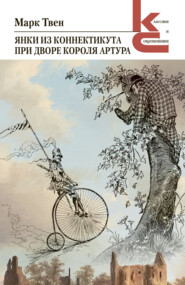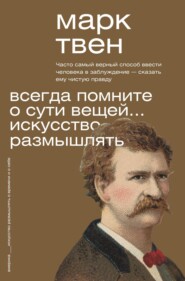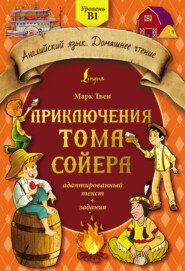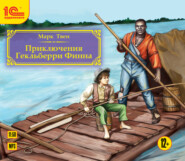По всем вопросам обращайтесь на: info@litportal.ru
(©) 2003-2025.
✖
A Tramp Abroad
Автор
Год написания книги
2015
Настройки чтения
Размер шрифта
Высота строк
Поля
Yet those brave men did succeed. They reached the Grands Mulets in safety. Even the fearful shock which their nerves had sustained was not sufficient to overcome their coolness and courage. It would appear from the official account that they were threading their way down through those dangers from the closing in of twilight until two o’clock in the morning, or later, because the rescuing party from Chamonix reached the Grand Mulets about three in the morning and moved thence toward the scene of the disaster under the leadership of Sir George Young, “who had only just arrived.”
After having been on his feet twenty-four hours, in the exhausting work of mountain-climbing, Sir George began the reascent at the head of the relief party of six guides, to recover the corpse of his brother. This was considered a new imprudence, as the number was too few for the service required. Another relief party presently arrived at the cabin on the Grands Mulets and quartered themselves there to await events. Ten hours after Sir George’s departure toward the summit, this new relief were still scanning the snowy altitudes above them from their own high perch among the ice deserts ten thousand feet above the level of the sea, but the whole forenoon had passed without a glimpse of any living thing appearing up there.
This was alarming. Half a dozen of their number set out, then early in the afternoon, to seek and succor Sir George and his guides. The persons remaining at the cabin saw these disappear, and then ensued another distressing wait. Four hours passed, without tidings. Then at five o’clock another relief, consisting of three guides, set forward from the cabin. They carried food and cordials for the refreshment of their predecessors; they took lanterns with them, too; night was coming on, and to make matters worse, a fine, cold rain had begun to fall.
At the same hour that these three began their dangerous ascent, the official Guide-in-Chief of the Mont Blanc region undertook the dangerous descent to Chamonix, all alone, to get reinforcements. However, a couple of hours later, at 7 P.M., the anxious solicitude came to an end, and happily. A bugle note was heard, and a cluster of black specks was distinguishable against the snows of the upper heights. The watchers counted these specks eagerly – fourteen – nobody was missing. An hour and a half later they were all safe under the roof of the cabin. They had brought the corpse with them. Sir George Young tarried there but a few minutes, and then began the long and troublesome descent from the cabin to Chamonix. He probably reached there about two or three o’clock in the morning, after having been afoot among the rocks and glaciers during two days and two nights. His endurance was equal to his daring.
The cause of the unaccountable delay of Sir George and the relief parties among the heights where the disaster had happened was a thick fog – or, partly that and partly the slow and difficult work of conveying the dead body down the perilous steeps.
The corpse, upon being viewed at the inquest, showed no bruises, and it was some time before the surgeons discovered that the neck was broken. One of the surviving brothers had sustained some unimportant injuries, but the other had suffered no hurt at all. How these men could fall two thousand feet, almost perpendicularly, and live afterward, is a most strange and unaccountable thing.
A great many women have made the ascent of Mont Blanc. An English girl, Miss Stratton, conceived the daring idea, two or three years ago, of attempting the ascent in the middle of winter. She tried it – and she succeeded. Moreover, she froze two of her fingers on the way up, she fell in love with her guide on the summit, and she married him when she got to the bottom again. There is nothing in romance, in the way of a striking “situation,” which can beat this love scene in mid-heaven on an isolated ice-crest with the thermometer at zero and an Artic gale blowing.
The first woman who ascended Mont Blanc was a girl aged twenty-two – Mlle. Maria Paradis—1809. Nobody was with her but her sweetheart, and he was not a guide. The sex then took a rest for about thirty years, when a Mlle. d’Angeville made the ascent —1838. In Chamonix I picked up a rude old lithograph of that day which pictured her “in the act.”
However, I value it less as a work of art than as a fashion-plate. Miss d’Angeville put on a pair of men’s pantaloons to climb it, which was wise; but she cramped their utility by adding her petticoat, which was idiotic.
One of the mournfulest calamities which men’s disposition to climb dangerous mountains has resulted in, happened on Mont Blanc in September 1870. M. D’Arve tells the story briefly in his histoire du Mont Blanc. In the next Chapter I will copy its chief features.
Chapter XLV
A Catastrophe Which Cost Eleven Lives
On the 5th of September, 1870, a caravan of eleven persons departed from Chamonix to make the ascent of Mont Blanc. Three of the party were tourists; Messrs. Randall and Bean, Americans, and Mr. George Corkindale, a Scotch gentleman; there were three guides and five porters. The cabin on the Grands Mulets was reached that day; the ascent was resumed early the next morning, September 6th. The day was fine and clear, and the movements of the party were observed through the telescopes of Chamonix; at two o’clock in the afternoon they were seen to reach the summit. A few minutes later they were seen making the first steps of the descent; then a cloud closed around them and hid them from view.
Eight hours passed, the cloud still remained, night came, no one had returned to the Grands Mulets. Sylvain Couttet, keeper of the cabin there, suspected a misfortune, and sent down to the valley for help. A detachment of guides went up, but by the time they had made the tedious trip and reached the cabin, a raging storm had set in. They had to wait; nothing could be attempted in such a tempest.
The wild storm lasted more than A week, without ceasing; but on the 17th, Couttet, with several guides, left the cabin and succeeded in making the ascent. In the snowy wastes near the summit they came upon five bodies, lying upon their sides in a reposeful attitude which suggested that possibly they had fallen asleep there, while exhausted with fatigue and hunger and benumbed with cold, and never knew when death stole upon them. Couttet moved a few steps further and discovered five more bodies. The eleventh corpse – that of a porter – was not found, although diligent search was made for it.
In the pocket of Mr. Bean, one of the Americans, was found a note-book in which had been penciled some sentences which admit us, in flesh and spirit, as it were, to the presence of these men during their last hours of life, and to the grisly horrors which their fading vision looked upon and their failing consciousness took cognizance of:
Tuesday, Sept. 6. I have made the ascent of Mont Blanc, with ten persons – eight guides, and Mr. Corkindale and Mr. Randall. We reached the summit at half past 2. Immediately after quitting it, we were enveloped in clouds of snow. We passed the night in a grotto hollowed in the snow, which afforded us but poor shelter, and I was ill all night.
Sept. 7—Morning. The cold is excessive. The snow falls heavily and without interruption. The guides take no rest.
Evening. My Dear Hessie, we have been two days on Mont Blanc, in the midst of a terrible hurricane of snow, we have lost our way, and are in a hole scooped in the snow, at an altitude of 15,000 feet. I have no longer any hope of descending.
They had wandered around, and around, in the blinding snow-storm, hopelessly lost, in a space only a hundred yards square; and when cold and fatigue vanquished them at last, they scooped their cave and lay down there to die by inches, unaware that five steps more would have brought them into the truth path. They were so near to life and safety as that, and did not suspect it. The thought of this gives the sharpest pang that the tragic story conveys.
The author of the histoire du Mont Blanc introduced the closing sentences of Mr. Bean’s pathetic record thus:
“Here the characters are large and unsteady; the hand which traces them is become chilled and torpid; but the spirit survives, and the faith and resignation of the dying man are expressed with a sublime simplicity.”
Perhaps this note-book will be found and sent to you. We have nothing to eat, my feet are already frozen, and I am exhausted; I have strength to write only a few words more. I have left means for C’s education; I know you will employ them wisely. I die with faith in God, and with loving thoughts of you. Farewell to all. We shall meet again, in Heaven… I think of you always.
It is the way of the Alps to deliver death to their victims with a merciful swiftness, but here the rule failed. These men suffered the bitterest death that has been recorded in the history of those mountains, freighted as that history is with grisly tragedies.
Chapter XLVI
Mr. Harris and I took some guides and porters and ascended to the Hotel des Pyramides, which is perched on the high moraine which borders the Glacier des Bossons. The road led sharply uphill, all the way, through grass and flowers and woods, and was a pleasant walk, barring the fatigue of the climb.
From the hotel we could view the huge glacier at very close range. After a rest we followed down a path which had been made in the steep inner frontage of the moraine, and stepped upon the glacier itself. One of the shows of the place was a tunnel-like cavern, which had been hewn in the glacier. The proprietor of this tunnel took candles and conducted us into it. It was three or four feet wide and about six feet high. Its walls of pure and solid ice emitted a soft and rich blue light that produced a lovely effect, and suggested enchanted caves, and that sort of thing. When we had proceeded some yards and were entering darkness, we turned about and had a dainty sunlit picture of distant woods and heights framed in the strong arch of the tunnel and seen through the tender blue radiance of the tunnel’s atmosphere.
The cavern was nearly a hundred yards long, and when we reached its inner limit the proprietor stepped into a branch tunnel with his candles and left us buried in the bowels of the glacier, and in pitch-darkness. We judged his purpose was murder and robbery; so we got out our matches and prepared to sell our lives as dearly as possible by setting the glacier on fire if the worst came to the worst – but we soon perceived that this man had changed his mind; he began to sing, in a deep, melodious voice, and woke some curious and pleasing echoes. By and by he came back and pretended that that was what he had gone behind there for. We believed as much of that as we wanted to.
Thus our lives had been once more in imminent peril, but by the exercise of the swift sagacity and cool courage which had saved us so often, we had added another escape to the long list. The tourist should visit that ice-cavern, by all means, for it is well worth the trouble; but I would advise him to go only with a strong and well-armed force. I do not consider artillery necessary, yet it would not be unadvisable to take it along, if convenient. The journey, going and coming, is about three miles and a half, three of which are on level ground. We made it in less than a day, but I would counsel the unpracticed – if not pressed for time – to allow themselves two. Nothing is gained in the Alps by over-exertion; nothing is gained by crowding two days’ work into one for the poor sake of being able to boast of the exploit afterward. It will be found much better, in the long run, to do the thing in two days, and then subtract one of them from the narrative. This saves fatigue, and does not injure the narrative. All the more thoughtful among the Alpine tourists do this.
We now called upon the Guide-in-Chief, and asked for a squadron of guides and porters for the ascent of the Montanvert. This idiot glared at us, and said:
“You don’t need guides and porters to go to the Montanvert.”
“What do we need, then?”
“Such as you? – an ambulance!”
I was so stung by this brutal remark that I took my custom elsewhere.
Betimes, next morning, we had reached an altitude of five thousand feet above the level of the sea. Here we camped and breakfasted. There was a cabin there – the spot is called the Caillet – and a spring of ice-cold water. On the door of the cabin was a sign, in French, to the effect that “One may here see a living chamois for fifty centimes.” We did not invest; what we wanted was to see a dead one.
A little after noon we ended the ascent and arrived at the new hotel on the Montanvert, and had a view of six miles, right up the great glacier, the famous Mer de Glace. At this point it is like a sea whose deep swales and long, rolling swells have been caught in mid-movement and frozen solid; but further up it is broken up into wildly tossing billows of ice.
We descended a ticklish path in the steep side of the moraine, and invaded the glacier. There were tourists of both sexes scattered far and wide over it, everywhere, and it had the festive look of a skating-rink.
The Empress Josephine came this far, once. She ascended the Montanvert in 1810—but not alone; a small army of men preceded her to clear the path – and carpet it, perhaps – and she followed, under the protection of sixty-eight guides.
Her successor visited Chamonix later, but in far different style.
It was seven weeks after the first fall of the Empire, and poor Marie Louise, ex-Empress was a fugitive. She came at night, and in a storm, with only two attendants, and stood before a peasant’s hut, tired, bedraggled, soaked with rain, “the red print of her lost crown still girdling her brow,” and implored admittance – and was refused! A few days before, the adulations and applauses of a nation were sounding in her ears, and now she was come to this!
We crossed the Mer de Glace in safety, but we had misgivings. The crevices in the ice yawned deep and blue and mysterious, and it made one nervous to traverse them. The huge round waves of ice were slippery and difficult to climb, and the chances of tripping and sliding down them and darting into a crevice were too many to be comfortable.
In the bottom of a deep swale between two of the biggest of the ice-waves, we found a fraud who pretended to be cutting steps to insure the safety of tourists. He was “soldiering” when we came upon him, but he hopped up and chipped out a couple of steps about big enough for a cat, and charged us a franc or two for it. Then he sat down again, to doze till the next party should come along.
He had collected blackmail from two or three hundred people already, that day, but had not chipped out ice enough to impair the glacier perceptibly. I have heard of a good many soft sinécures, but it seems to me that keeping toll-bridge on a glacier is the softest one I have encountered yet.
That was a blazing hot day, and it brought a persistent and persecuting thirst with it. What an unspeakable luxury it was to slake that thirst with the pure and limpid ice-water of the glacier! Down the sides of every great rib of pure ice poured limpid rills in gutters carved by their own attrition; better still, wherever a rock had lain, there was now a bowl-shaped hole, with smooth white sides and bottom of ice, and this bowl was brimming with water of such absolute clearness that the careless observer would not see it at all, but would think the bowl was empty. These fountains had such an alluring look that I often stretched myself out when I was not thirsty and dipped my face in and drank till my teeth ached. Everywhere among the Swiss mountains we had at hand the blessing – not to be found in Europe except in the mountains – of water capable of quenching thirst. Everywhere in the Swiss highlands brilliant little rills of exquisitely cold water went dancing along by the roadsides, and my comrade and I were always drinking and always delivering our deep gratitude.
But in Europe everywhere except in the mountains, the water is flat and insipid beyond the power of words to describe. It is served lukewarm; but no matter, ice could not help it; it is incurably flat, incurably insipid. It is only good to wash with; I wonder it doesn’t occur to the average inhabitant to try it for that. In Europe the people say contemptuously, “Nobody drinks water here.” Indeed, they have a sound and sufficient reason. In many places they even have what may be called prohibitory reasons. In Paris and Munich, for instance, they say, “Don’t drink the water, it is simply poison.”
Either America is healthier than Europe, notwithstanding her “deadly” indulgence in ice-water, or she does not keep the run of her death-rate as sharply as Europe does. I think we do keep up the death statistics accurately; and if we do, our cities are healthier than the cities of Europe. Every month the German government tabulates the death-rate of the world and publishes it. I scrap-booked these reports during several months, and it was curious to see how regular and persistently each city repeated its same death-rate month after month. The tables might as well have been stereotyped, they varied so little. These tables were based upon weekly reports showing the average of deaths in each 1,000 population for a year. Munich was always present with her 33 deaths in each 1,000 of her population (yearly average), Chicago was as constant with her 15 or 17, Dublin with her 48—and so on.
Only a few American cities appear in these tables, but they are scattered so widely over the country that they furnish a good general average of city health in the United States; and I think it will be granted that our towns and villages are healthier than our cities.
Here is the average of the only American cities reported in the German tables:
Chicago, deaths in 1,000 population annually, 16; Philadelphia, 18; St. Louis, 18; San Francisco, 19; New York (the Dublin of America), 23.
See how the figures jump up, as soon as one arrives at the transatlantic list:

















